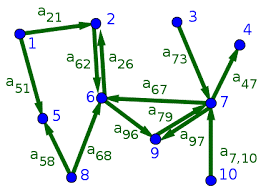

T 2353/22: Assessment of inventive step of a claim with technical and non-technical features
Case Law Summary T 2353/22
Background
The Examining Division (ED) refused European patent application No. 17851913.8 for lack of inventive step under Art. 56 EPC. The decision to refuse was based on ED’s finding that the subject-matter was essentially non-technical and not inventive over cited prior art document D1.
The application was about lineage metadata, which provides information about sources from which a data object was derived. For example, how the data object was generated, from which source it was imported, how it has been used by applications, how it relates to other datasets or how its modification will affect tables. The ED interpreted claim 1 as defining an abstract graph model of data lineage describing a network of nodes and edges, in the form of a customized query processing formulation. The ED found that the subject matter was void of any further technical considerations, as no technical effect serving a technical purpose could be derived from the claim wording.
The Appeal
With the statement of appeal, the appellant (A) requested that the decision under appeal be set aside and a patent be granted on the basis of the main request or of one of six auxiliary requests on which the appealed decision was based.
With Summons to Oral Proceedings, the Board introduced prior art documents D2-D8 and formulated the opinion that the subject-matter of claim 1 of each request lacked an inventive step over document D2 in combination with common general knowledge.During Oral Proceedings, A filed a revised fifth auxiliary request as the new main request.
A argued that the ED had applied the problem-solution approach in a way that was biased and based on hindsight, had not interpreted the claim features correctly, and was incorrect in their assessment of the technical character of the features. According to A, the ED had artificially separated features which were claimed together.
A further argued that commonplace or generic computer components could be involved in a technical contribution, and that the ED had failed to recognize this in the analysis of the claimed system.
The Board largely agreed with the decision under appeal regarding the identification of features as being non-technical.
The Board however agreed with A that the reasoning of the decision under appeal was not convincing. The Board found that the decision under appeal had not taken all claim features making a technical contribution into account in the inventive step assessment, and that the specific implementation as defined by the claim had not been considered. The Board emphasized that the claim must be analysed as a whole. As a consequence, one feature which according to the ED was “commonplace” and therefore not contributing to an inventive step, in the assessment by the Board actually made a technical contribution when considered in the context of the claim and should therefore be taken into account in the assessment of inventive step. The Board confirmed T 619/02, stating that “the fact that the ultimate goal of the claimed method is not technical is not sufficient to conclude that the whole implementation is not technical”.
>> Summary continues below the photo

The Board however agreed with A that the reasoning of the decision under appeal was not convincing. The Board found that the decision under appeal had not taken all claim features making a technical contribution into account in the inventive step assessment, and that the specific implementation as defined by the claim had not been considered. The Board emphasized that the claim must be analysed as a whole. As a consequence, one feature which according to the ED was “commonplace” and therefore not contributing to an inventive step, in the assessment by the Board actually made a technical contribution when considered in the context of the claim and should therefore be taken into account in the assessment of inventive step. The Board confirmed T 619/02, stating that “the fact that the ultimate goal of the claimed method is not technical is not sufficient to conclude that the whole implementation is not technical”.
The Board agreed with the argument of the ED, citing G 1/19, that “merely” performing a method, the result of which did not cause any “technical effect(s) in a physical entity in the real world” was not sufficient to contribute to the technical character of the invention, and that “the mere calculation of the behaviour of a (technical) system as it exists on the computer, and the numerical output of such calculations, should not be equated with a technical effect”.
However, the Board noted that according to G 1/19, “technical effects” or “technical interactions” do not only occur through the generation of “technical output”. Technical contributions can result from, e.g., “adaptations to the computer or its operation, which result in technical effects (e.g., better use of storage capacity or bandwidth)” and “technical effects can occur within the computer-implemented process (e.g. by specific adaptations of the computer or of data transfer or storage mechanism”.
According to the Board, in the assessment of technical contribution and inventive step, the claim should not be analysed as a collection of disconnected terms but as a whole. Even though one of the claim features under discussion was commonplace, its purposive use in the claimed method made a technical contribution and could not be ignored in the assessment of inventive step. The Board stated that the distinguishing features solve the technical problem of supporting, in the system of prior art document D2, the functionality for performing non-technical requirements.
According to the Board, none of the cited prior art documents disclosed the combination of the distinguishing features. Although it would be within the ordinary skills of the computer expert to arrive at the data structure specified in the distinguishing features, i.e., the non-technical lineage structure, the Board was not convinced that the skilled person would arrive at the combination of all distinguishing features as defined by the claim. The Board therefore concluded that the claimed subject matter was inventive under Art. 56 EPC.
Decision of the Board
The Board decided that the decision of the appeal is set aside, and referred the case back to the ED with the order to proceed to grant based on the new main request filed during oral proceedings.
Summary written by the NLO EPO Case Law Team.







